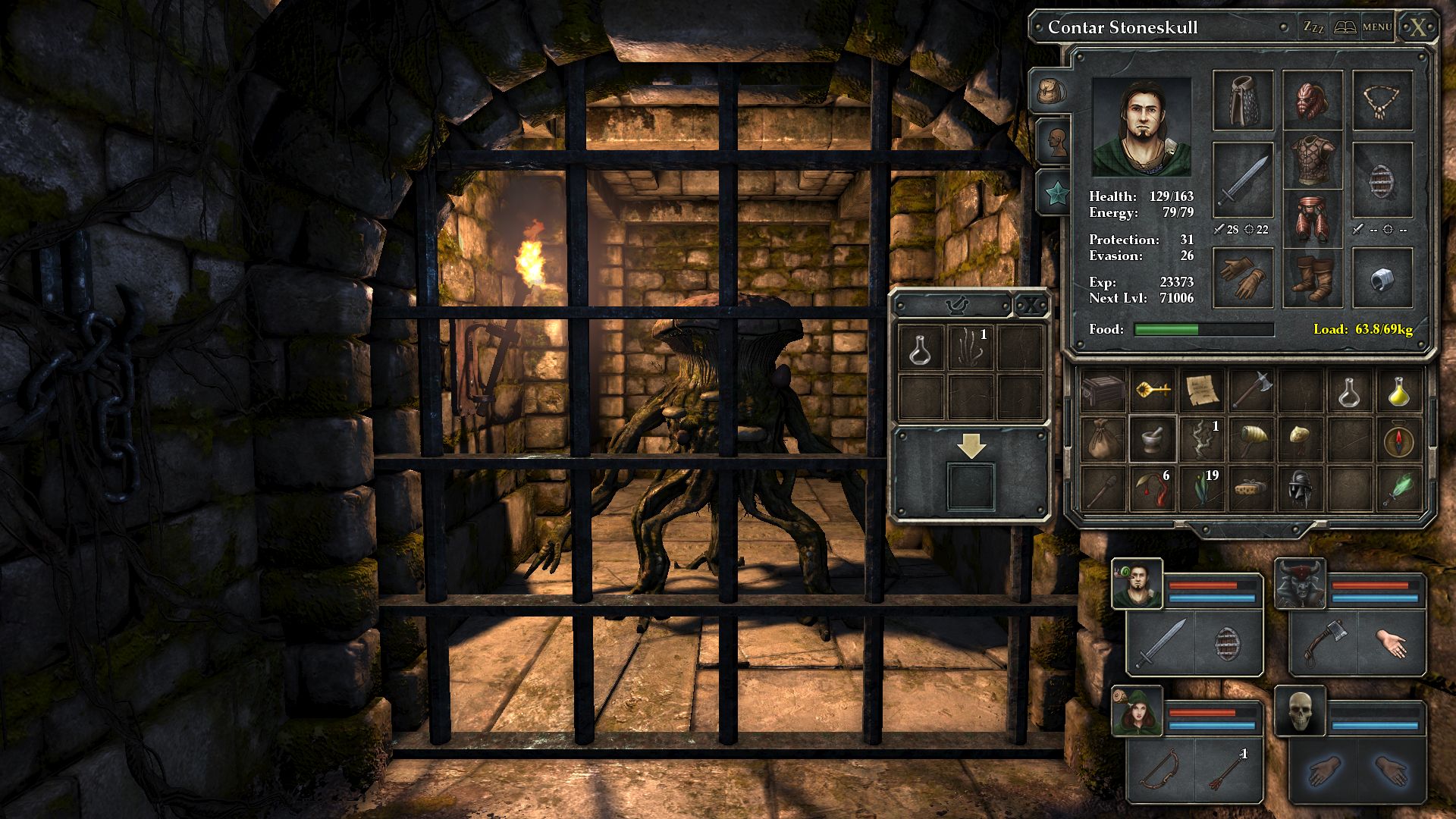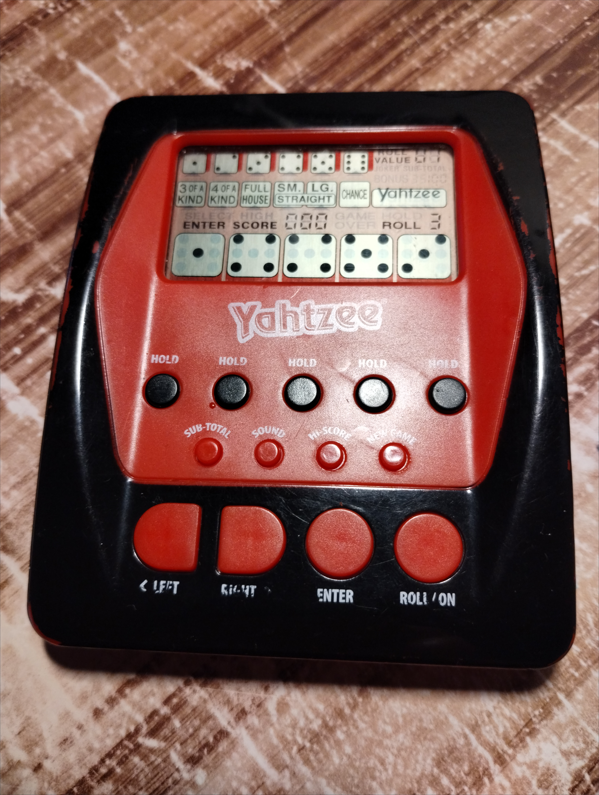|
Questron
''Questron'' is a 1984 game from Strategic Simulations, the first fantasy title from a company known for computer wargames. It was written by Charles Dougherty and Gerald Wieczorek and released for the Apple II, Atari 8-bit family, and Commodore 64. A sequel, '' Questron II'', was released in 1988. After aout-of-court settlement the structure and style of the game were both officially licensed from Richard Garriott, author of '' Akalabeth'' and '' Ultima''.From Questron in-game menu screen, Apple II and Commodore 64 versions. Gameplay In the first ''Questron'' game, the player takes on the role of a young serf who tries to make a name for himself by traveling the realm in order to gain the power and experience necessary to defeat the wicked "Mantor", ruler of the "Land of Evil". The view is mostly in top-down style for the world maps and town encounters, but switches to a first-person style in the dungeons of the Land of Evil. Some features were novel for a game of its type a ... [...More Info...] [...Related Items...] OR: [Wikipedia] [Google] [Baidu] |
Questron II
''Questron II'' a 1988 role-playing video game published by Strategic Simulations for the Apple II, Apple IIGS, Atari ST, Commodore 64, IBM PC, and Amiga. It is the sequel to 1984's ''Questron''. The story and original design is credited to Quest Software (John and Charles Dougherty), the programming and artwork is credited to Westwood Associates. Plot The player's character has been sent back in time to defeat six Mad Sorcerers before they can create the Book of Magic featured in the original game. Reception ''Questron II'' outsold its predecessor by about 16,000 copies. Scorpia described the game as very similar to, but not as good as, the original. ''Questron II'' was reviewed in 1988 in ''Dragon'' #138 by Hartley, Patricia, and Kirk Lesser in "The Role of Computers" column. The reviewers gave the game 4 out of 5 stars. '' Phantasie I'', '' Phantasie III'', and ''Questron II'' were later re-released together, and reviewed in 1994 in ''Dragon'' #203 by Sandy Petersen in th ... [...More Info...] [...Related Items...] OR: [Wikipedia] [Google] [Baidu] |
Legacy Of The Ancients
''Legacy of the Ancients'' is a fantasy role-playing video game published by Electronic Arts in 1987. Gameplay The player takes on the role of a young shepherd who finds and loots a recently dead body while on a first trip to the city, taking a black disk, a bracelet, and a leather scroll. The Galactic Museum mysteriously appears to the player after collecting these items. The player learns that by taking these items, he has become the next in a line of adventurers attempting to destroy the Wizard's Compendium, the leather scroll the player picked up. The museum has various display cases that require the insertion of special coins of various types to access. Some coins can be bought in random encounters with NPCs, some can be found as loot after combat, and some coins can only be found at the bottom level of various dungeons, meaning the player cannot proceed beyond a certain point until that dungeon is finished. Unlike many RPGs, the game does not use an experience point system ... [...More Info...] [...Related Items...] OR: [Wikipedia] [Google] [Baidu] |
Role-playing Video Game
A role-playing video game (commonly referred to as simply a role-playing game or RPG, as well as a computer role-playing game or CRPG) is a video game genre where the player controls the actions of a character (or several party members) immersed in some well-defined world, usually involving some form of character development by way of recording statistics. Many role-playing video games have origins in tabletop role-playing games#AdRol, Adams, Rollings 2003, p. 347 and use much of the same :Role-playing game terminology, terminology, Campaign setting, settings and Game mechanics, game mechanics. Other major similarities with pen-and-paper games include developed story-telling and narrative elements, player character development, complexity, as well as replay value and immersion. The electronic medium removes the necessity for a gamemaster and increases combat resolution speed. RPGs have evolved from simple Text-based game, text-based console-window games into visually rich 3D com ... [...More Info...] [...Related Items...] OR: [Wikipedia] [Google] [Baidu] |
Phantasie (video Game)
''Phantasie'' is the first video game in the '' Phantasie'' series. Gameplay Based on the Isle of Gelnor, ''Phantasie'' allows a group of six characters to adventure the countryside and try to defeat the evil Black Knights and their sorcerer leader, Nikademus. Players could choose to be one of six character classes (Thief, Fighter, Ranger, Monk, Priest, and Wizard) and could also choose between the races of Human, Dwarf, Halfling, Elf, or Gnome. By selecting "Random" one could also choose from ogre, troll, pixie, gnoll, orc, lizard man, minotaur, and other races. The game was notable for taking advantage of a broad mix of styles for the game: a town window which allowed purchasing in various shops, a top-down style dungeon crawl view, a top-down world map, and a separate combat window. Each character class had unique fighting styles and options and all characters could choose their strategy for a particular round in the turn-based combat segments. After a combat, exper ... [...More Info...] [...Related Items...] OR: [Wikipedia] [Google] [Baidu] |
Strategic Simulations
Strategic Simulations, Inc. (SSI) was a video game developer and publisher with over 100 titles to its credit from its founding in 1979 to its dissolution in 1994. The company was especially noted for its numerous wargames, its official computer game adaptations of ''Dungeons & Dragons'', and for the groundbreaking ''Panzer General'' series. History The company was founded by Joel Billings, a wargame enthusiast, who in the summer of 1979 saw the possibility of using the new home computers such as the TRS-80 for wargames. While unsuccessfully approaching Avalon Hill and Automated Simulations to publish wargames, he hired programmers John Lyons, who wrote ''Computer Bismarck''—later claimed to have been the first "serious wargame" published for a microcomputer"Titans of the Computer Gaming World"''Computer Gaming World'', March 1988 p.36.—and Ed Williger, who wrote ''Computer Ambush''. Both games were written in BASIC as were many of SSI's early games. Although Billings exp ... [...More Info...] [...Related Items...] OR: [Wikipedia] [Google] [Baidu] |
The Legend Of Blacksilver
''The Legend of Blacksilver'' is a fantasy role-playing video game developed by Charles W. Dougherty and John C. Dougherty of Quest, Inc. and published by Epyx in 1988. It is an indirect sequel to the game ''Legacy of the Ancients''. Originally designed for the Commodore 64, the game was ported to the Apple II. Plot The principal character in the game is first contacted by Princess Aylea in a dream-vision, she wakes the player by telling that that she needs a hero wher others have failed and when the player askes "Why me?" and she begins to tell the player a story. They are told that the evil Baron Taragas from the Kingdom of Maelbane has discovered the legendary material "Blacksilver" and has conspired with a local baron, Baron Mantrek. Supposedly in the hands of evil, Blacksilver could be used to create weapons of mass destruction. Princess Aylea instructs the character to rescue her father, King Durek, who was leading an army on Baron Taragas but was then captured by the evil ... [...More Info...] [...Related Items...] OR: [Wikipedia] [Google] [Baidu] |
Commodore Power/Play
''Commodore Power/Play'' was one of a pair of computer magazines published by Commodore Business Machines in the United States in support of their 8-bit home computer lines of the 1980s. The other was called ''Commodore Interface'', changed to just ''Commodore'' in 1981, ''Commodore Microcomputer'' in 1983, and finally to ''Commodore Microcomputers'' in 1984 and for the rest of its run. The two magazines were published on an alternating, bimonthly schedule. History and profile ''Power/Play'' was started in 1982 as a quarterly publication. The magazine was targeted at the home computer user, emphasizing video games, educational and hobbyist uses of the Commodore 64/128 and VIC-20 models. ''Commodore Microcomputers'' initially served Commodore's business customers using the PET and CBM lines but as the business market segments standardized on CP/M and later MS-DOS MS-DOS ( ; acronym for Microsoft Disk Operating System, also known as Microsoft DOS) is an operating system for x ... [...More Info...] [...Related Items...] OR: [Wikipedia] [Google] [Baidu] |
Electronic Games
An electronic game is a game that uses electronics to create an interactive system with which a player can play. Video games are the most common form today, and for this reason the two terms are often used interchangeably. There are other common forms of electronic game including handheld electronic games, standalone systems (e.g. pinball, slot machines, or electro-mechanical arcade games), and exclusively non-visual products (e.g. audio games). Teletype games The earliest form of computer game to achieve any degree of mainstream use was the text-based Teletype game. Teletype games lack video display screens and instead present the game to the player by printing a series of characters on paper which the player reads as it emerges from the platen. Practically this means that each action taken will require a line of paper and thus a hard-copy record of the game remains after it has been played. This naturally tends to reduce the size of the gaming universe or alternatively to r ... [...More Info...] [...Related Items...] OR: [Wikipedia] [Google] [Baidu] |
Gold Box
Gold box may refer to: *Decorative boxes made in gold *''Gold Box Gold box may refer to: * Decorative boxes made in gold *'' Gold Box'', a series of video games of 1988 to 1992 * Gold box (phreaking), a phreaking box to create a bridge between two telephone lines {{disam ...'', a series of video games of 1988 to 1992 * Gold box (phreaking), a phreaking box to create a bridge between two telephone lines {{disam ... [...More Info...] [...Related Items...] OR: [Wikipedia] [Google] [Baidu] |
ANALOG Computing
''ANALOG Computing'' (an acronym for Atari Newsletter And Lots Of Games) was an American computer magazine devoted to the Atari 8-bit family of home computers. It was published from 1981 until 1989. In addition to reviews and tutorials, ''ANALOG'' printed multiple programs in each issue for users to type in. The magazine had a reputation for listings of machine language games–much smoother than those written in Atari BASIC—and which were uncommon in competing magazines. Such games were accompanied by the assembly language source code. ''ANALOG'' also sold commercial games, two books of type-in software, and access to a custom bulletin-board system. Originally the title as printed on the cover was ''A.N.A.L.O.G. 400/800 Magazine'', but by the eighth issue it changed to ''A.N.A.L.O.G. Computing''. Though the dots remained in the logo, it was simply referred to as ''ANALOG'' or ''ANALOG Computing'' inside the magazine. While the program listings were covered under the ... [...More Info...] [...Related Items...] OR: [Wikipedia] [Google] [Baidu] |
Family Computing
''Family Computing'' was a U.S. computer magazine published during the 1980s by Scholastic It covered all the major home computer platforms of the day including the Apple II, VIC-20, Commodore 64, Atari 8-bit family, as well as the IBM PC and Macintosh. It printed a mixture of product reviews, how-to articles and type-in programs. The magazine also featured a teen-oriented insert called K-Power, written by Stuyvesant High School students called the Special-K's. The section was named after a former sister magazine which folded after a short run. This section was discontinued after the July 1987 issue as part of the magazine's shift toward home-office computing. History and profile The first issue of the magazine appeared in September 1983. It was notable in the early days for the wide variety of systems it supported with type in programs, including such "orphaned" systems as the Coleco Adam and TI 99/4A long after other magazines discontinued coverage. There was also a spinoff TV ... [...More Info...] [...Related Items...] OR: [Wikipedia] [Google] [Baidu] |

.jpg)
